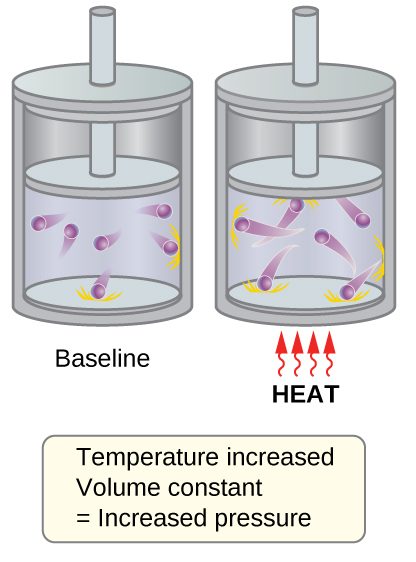Based on what we have learned about the effect of temperature on gas particle motion, we know that as temperature increases, the particles in a gas sample will tend to move more quickly. This means that the particles will collide with the container walls more frequently at a higher temperature. These collisions are also more forceful, since the particles are moving more quickly on average (review the physics concept of impulse to see why). If the container volume is kept constant, pressure of a gas will increase as the temperature increases.

If the container is allowed to expand (maintaining a constant pressure instead of a constant volume), then the container will expand because of these increased collisions. This explains why the contents of a hot-air balloon expand when heated, as seen in the chapter intro.